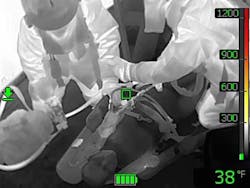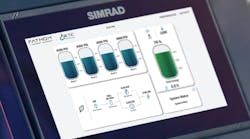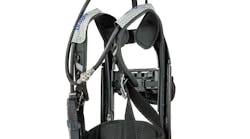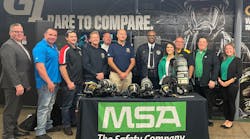Does your department have different self-contained breathing apparatus (SCBA) on every apparatus that might respond to a fire?
This rapid-intervention team (RIT) drill stemmed from multi-company fires with different SCBA. In our municipality, we are unfortunately not using standardized SCBA on every engine or truck. This is clearly not ideal, but budgetary constraints create a reality with which we must live. Perhaps your department has a similar challenge, or maybe you work in an area with frequent mutual-aid responses, or perhaps your department is all-volunteer with non-standard equipment from the next department with which you might respond. Whatever your challenge, you need to be prepared for RIT situations with SCBA that don’t necessarily have the same connections and fittings.
During training with our RIT packs, we discovered the critical need to practice with various types of SCBA interfaces to ensure that all firefighters could receive air from the RIT. Of course, you should expect a real RIT deployment will occur in less-than-optimal conditions. Train accordingly!
Drill prep
Prior to the drill, have members discuss how and when to call a mayday according to departmental guidelines. Quiz firefighters on elements of essential communications, such as LUNAR, UCAN or whichever pneumonic your department uses. Demonstrate emergency operation of portable radios as applicable to your jurisdiction. Cite vital statistics from NIOSH reports and emphasize that the reality of staffing needed for an actual rescue is often underestimated. Discuss real-life scenarios, close calls, rescues and line-of-duty deaths (LODDs) for reinforcement. Once your personnel are efficient with the above, you might consider adding downed firefighter practice drags and carries utilizing webbing, turnout coat drag straps and other tools.
Materials needed
- RIT pack (spare bottle, air hose and multiple connections)
- Thermal-imaging camera (TIC)
- Mask blackout inserts/wax paper or hoods
- Spare SCBA (preferably multiple types)
- Spare air bottles
- Mannequin outfitted with spare SCBA
- 20-foot nylon webbing
As for personnel, there should be an instructor/inside safety officer, and two to three RIT members per team per drill.
Familiarize firefighters with your RIT packs, pieces/parts and their operation regardless of apparatus assignment. Allow firefighters to get hands on, connecting and disconnecting fittings several times from the RIT pack to all possible regular use SCBAs. Training is the time to start developing muscle memory for use in the dark and dangerous environment that will be the eventual fireground.
In a previous evolution, we encountered four different SCBA among the members of three companies. Further, we encountered SCBA that would only connect to the RIT using the buddy breather, some only with an adapter to buddy breather, and some only via the trans-fill valve. You need to make sure personnel can identify appropriate connections in both daylight and blackout conditions during the evolution. Ensure all members are intimately acquainted with each SCBA they potentially would use, as some have shoulder-mounted buddy breathers, and some waist-mounted pouches.
Drill time
To complete drill set-up, place a mannequin with an SCBA with low air (25 percent or lower) inside a structure. The PASS device and low-air alarm should be sounding on the mannequin. The instructor and a safety officer should be inside the structure with a TIC when the structure is darkened to observe and coach teams as needed.
The entry team may drill with or without smoke, but with masks blacked out with inserts, wax paper or hoods. They should enter on breathing air and with the RIT pack. Discourage use of flashlights or TICs by the entry crew to reinforce tactile skills in making connections.
Teams of two to three should enter the structure for a search of the downed firefighter. When located, the goal is to rapidly assess the downed firefighter who is low on air, supply air utilizing the RIT pack, and remove the downed firefighter from the structure.
Multiple evolutions with differing SCBA are essential to practicing use of the RIT pack connecting as a buddy breather, regulator to facemask, or a trans-filling device.
Ensure that all personnel involved understand the radio channel to be used and how to notify the safety officer of a real-life emergency.
Lessons learned
- On older model SCBA, the only available method for air supply was the male adapter to the hose to the buddy breather valve. There was no trans-fill port present. In our particular department, this led us to the addition of a facepiece-mounted regulator to our commercially prepared RIT pack.
- On some models, the buddy breather was on the left side of the pack and on some the right. This is important to know because locating the connection determines which way to roll or position the downed firefighter. Additionally, when attempting to remove the downed firefighter while buddy breathing from the RIT pack was extremely cumbersome.
- Newer SCBA were compatible with the trans-fill port located on the lower left of the SCBA if standing behind the downed firefighter. This was important to note, as the advantage would be to roll the downed firefighter onto their right side to access the trans-fill valve, often performed simultaneously with SCBA harness conversion for removal.
Show up strong
When the drill is complete, critique the team’s skill performance, communications, and “what-if” scenarios. Point out strengths of each team and various approaches or tips learned to complete these critical connections so your RIT team can show up strong.






